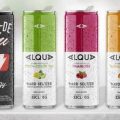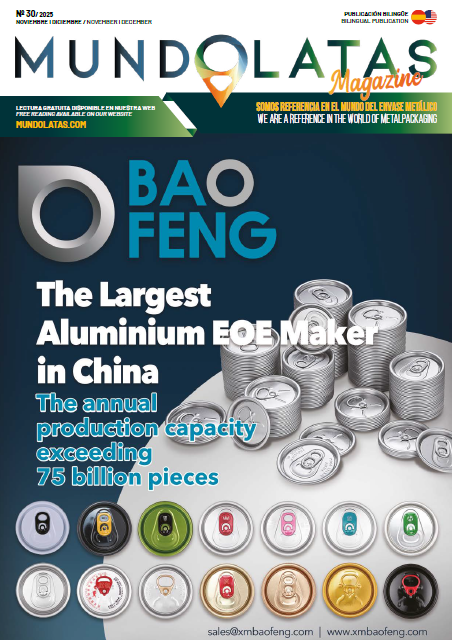Sleek can for a long time
I worked on the development of the elegant can while at Alcoa in the mid-1990s. Alcoa may not have been the first to work on it, but the company may have been. I define a sleek can as 204 (some refer to them as 204.5) or 58 mm in diameter. Sleek cans come in various sizes (packaging volume) and this, of course, is determined by the height of the can. The most common sizes are in the 250 to 375 ml range. People often confuse sleek and thin cans. I define thin cans as 202 or 53 mm in diameter and with a 200 diameter end.
The Alcoa sleek can was specifically conceived because of the new 202 end which was marketed in 211 diameter, 355 ml beer and soft drink cans. An 8 fl oz (236 ml) can was designed to compete with children’s aseptic juice boxes.
Alcoa pioneered the use of finite element analysis to design cans and ends. In this case, performance modeling was used to design a lightweight aluminum can to meet industry standards with 90 psi buckling and a minimum axial load of 180 pounds. Tools were developed for sampling in the laboratory and all typical performance tests were performed. Subsequently, Alcoa worked with Ball to manufacture samples of real cans. A special 202 end was designed which was basically an aluminum housing with a hole drilled in it. The hole was covered with metallized tape and the beverage product was accessed using a plastic straw to puncture the tape, similar to accessing the contents of an aseptic children’s box. The aluminium can was far superior to the hard-to-recycle multilayer aseptic box in terms of recyclability. However, the can was not used at the time. The problem was that sustainability was not as important as it is today.
Consumer research was conducted on this stylish new can format and found that focus group participants loved the pack. The hand feel was perfect, as it was much easier to hold than a standard 211 diameter can. The women especially liked the diameter of the can, the 8-ounce size and thought it was the perfect package for diet soda.
The sleek can also has other benefits, one of which is that it is more metal efficient in a 355ml size than a standard 211 diameter can. The long side walls make this possible. In addition, if one is not concerned about the stacking of cans, the diameter of the holder can be reduced. This allows for a reduction in initial gauge resulting in even less metal in the cans and possibly further reductions in cost.
The 222 ml (7.5 fl. Oz.) sleek can, or Mini Can, as it is known, has been used successfully for soft drinks for many years. It appeals to consumers because it allows for portion control; a soft drink sweetened with HFCS has only 99 calories. It is also attractive to beverage companies because they can charge a premium per ounce which helps their profitability.
In taller, sleeker formats, there can be challenges in making the cans work. Existing bodymaker manufacturers may not have an adequate stroke length for the taller fancy cans. Bodymakers may have to run slower and removing cans from the punch may be more problematic. In addition, with its high aspect ratio, a tall, sleek can has a higher center of gravity and is more prone to tipping and falling while being transported. Fill lines may need to be slowed down to run properly or carefully adjusted to maintain current line speeds. At the end of the day, all cans seem to compare to an industry standard 211 in diameter and 355 ml. This is a formidable competitor for any new package, as the standard can is processed in incredibly high volumes, at high manufacturing speeds and also at high filling speeds.
So let’s move forward so far. Recently, the use of sleek cans has virtually exploded, mainly driven by hard seltzers like White Claw and Truly. But why did it take so long for it to become a successful package? Because I needed time for all the stars to align. Soft drinks began to be promoted as unhealthy. As a result, after years and years on the market, non-alcoholic sparkling waters suddenly became fashionable and, of course, were seen as a healthier option than soft drinks. Then came seltzer waters with alcohol or hard seltzer. Then, hard seltzer companies chose the sleek can as a way to differentiate themselves from the competition and it has become their brand identity. Single-use plastic containers were criticized for not being sustainable, so both brand owners and consumers wanted metal cans. So with all this in mind, it’s the perfect time to can sleek. Cans, including sleek cans, are in short supply in North America and this shortage is expected to last until 2025. In addition, in recent years, the volume mix has shifted towards special cans. Can makers like this because their margins are better on specialty cans.
Why did it take so long for the elegant can to finally do it? One of the main reasons is due to the negativity associated with plastic packaging. Prior to this, plastics were the “hot” material for a couple of decades, the PET bottle industry is less expensive than the can industry, and a new PET bottle shape and size can be designed, manufactured and marketed in 90 days. All this creates a difficult barrier to entry for new cans.
Finally, sleek can volumes are expected to continue to grow, as both brand owners and consumers have shown strong support for this packaging format. Marketers must sell this can for the right occasions, in the right channels, using the right brands and at the right price. If they do this, with the added benefits of aluminium’s sustainability story, the elegant ones can’t help but be more successful.
Scott Biondich is a principal at The CANsultants, a two-person management consulting firm that works in the packaging space and specializes in metal packaging. Together with their business partner, John Adams, they have over 50 years of experience in the can industry. More information can be found at www.TheCANsultants.com














0 Comments